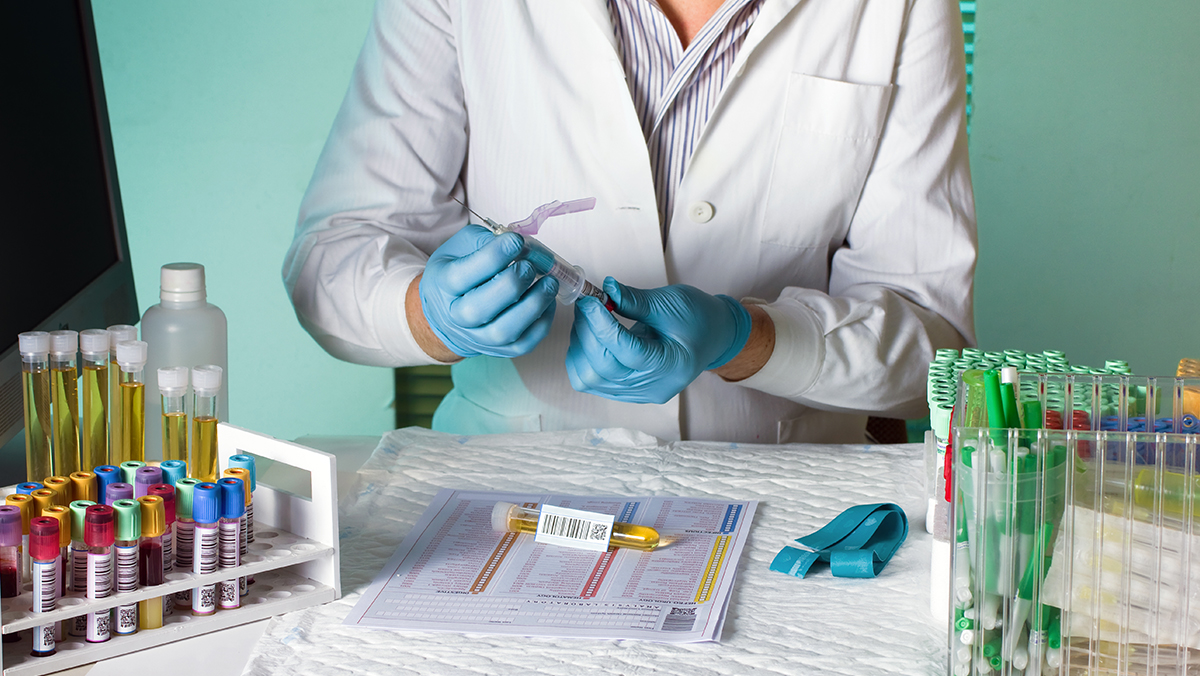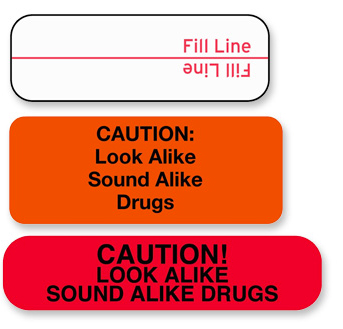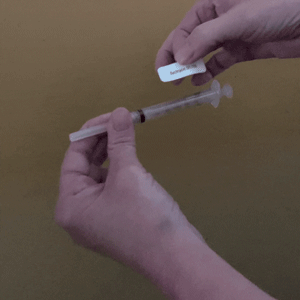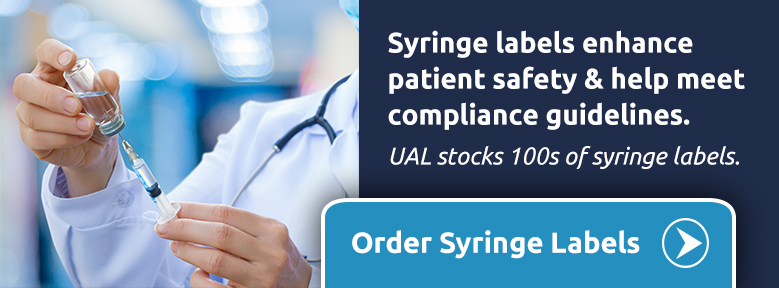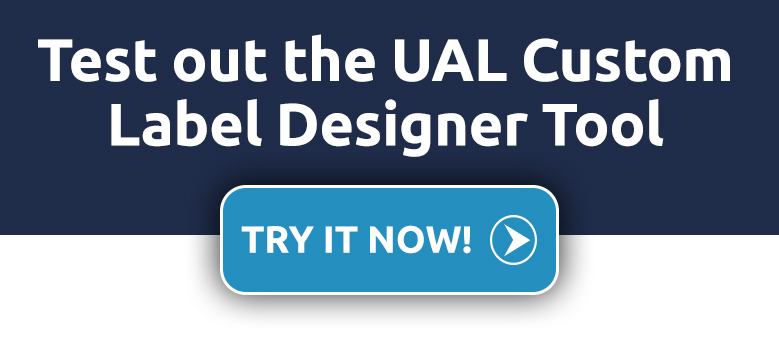Whether it’s directly into a patient’s deltoid muscle or an IV tubing port, a syringe is a common method for medication administration. And like other administration options, it requires special care to ensure that errors don’t occur. For example, The Agency For Healthcare Research And Quality reports that nearly 5% of hospitalized patients experience an Adverse Drug Event (ADE). That makes them one of the most common types of inpatient errors and those errors often include drug mix ups. Avoid these inevitable challenges. Use this syringe labeling guide to help reduce preventable errors and improve overall patient safety.
What Is A Syringe Label?
A syringe label contains key medication and patient information that helps to ensure healthcare professionals administer the proper medication, reducing medication errors and enhancing patient safety.
Syringe Label Requirements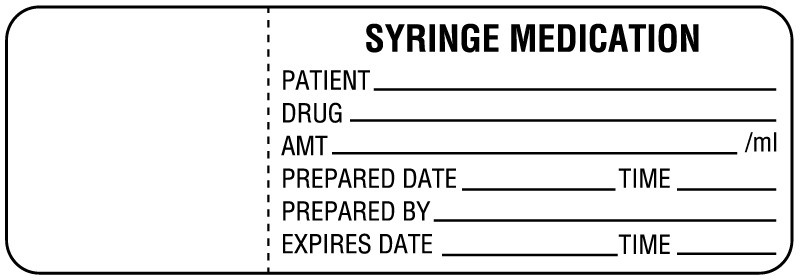
Although proper labeling has proven to reduce medication errors across the patient care spectrum, it’s especially important in high-stress environments such as the Emergency Department. But regardless of where you use a syringe, compliance guidelines require the syringe label to contain the drug name and dosage/concentration. Plus, the ASAHQ suggests it should also includes these additional elements:
- Date and time of preparation
- Initials or name of administrator
- Patient’s name
- Route of administration
In addition, employing other safeguards such as the ASTM color coding system, with each color referring to a particular drug class, can differentiate products and assist safe medication dispensing. Similarly, using drug labels for syringes that wrap around a syringe, like Tall Man and Look Alike Sound Alike flags, alert the medical staff to drugs that have a name similar to other medications.
How Do You Properly Label A Medical Syringe?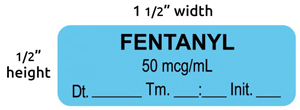
Starting with the varying sizes of syringes used to administer medications, properly labeling a medical syringe presents a few challenges. Although the definition of a syringe refers to the entire unit, which includes the barrel, plunger and needle, the label is applied to the barrel. The barrel size can range from 0.25 ml up to 450 ml and the larger and longer the barrel, the easier it is to apply the syringe label. The circumference of the barrel also varies. A smaller circumference creates more pressure to dispense the medication but can also make applying the label more difficult.
Another key element to proper syringe labeling is selecting the right label materials. Because of the small barrel diameter, it’s essential to use flexible paper, making it easy to wrap around a syringe. This material also prevents the label from pulling away from the vial or flagging and obscuring the medication information. In addition, the material must accept writing, like a pen or marker so the medical staff can add appropriate information.
But once you meet these requirements, labeling the syringe is next. A typical syringe label is ½” deep by 1 ½” long. To ensure the information is easily seen by the caregiver, the label should be applied so the length of the label runs along the length of the barrel while ensuring the graduations on the syringe remain visible. Lastly, if the syringe is placed on a tray or other surface prior to administration, position the syringe so the label is facing up and visible to the caregiver.
Most Common Types Of Syringe Labels
Syringe labels combat one area that the Joint Commission calls out in their annual National Patient Safety Goals publication that is especially problematic:
Medicines that are not conventionally labeled.
Syringes along with medicine cups and basins are the most common culprits.
There are three common types of syringe labels that address this challenge:
- Anesthesia Syringe Labels
- Vaccine Syringe Labels
- Syringe Dosage Labels
Anesthesia Syringe Labels
Anesthesia Syringe Labels help prevent confusion and misidentification. For example, printed medication names eliminate errors resulting from illegible handwriting. And, for prepared medications they allow the medical staff to record key data points, such as drug name, strength and more, to aid in proper dispensing.
Vaccine Syringe Labels
Vaccine syringe labels clearly identify the syringe, ensure important information is easily readable and include space to write expiration dates and time. Once the vaccine is opened, vaccine labels show the safe use dates and help to ensure the vaccine’s efficacy is maintained. Plus, vaccine syringe labels can be used to organize vaccines within the storage unit.
Syringe Dosage Labels
For certain syringes, the fill point is difficult to gauge. A syringe dosage label solves that problem. It is transparent, with a highly visible red line allowing the administrator to clearly identify the proper fill point which decreases the risk of an improper dosage.
Plus, for multi-dose vials, applying a syringe dosage communication label that contains a line to record the expiration date ensures the medication is used in accordance with manufacturer's instructions.
Are Syringe Labels Sterile?
Certain medical procedures, such as injections conducted in surgery, require sterile processes. When administering medications in that surgical setting, the syringe used to dispense that medication requires a sterile label.
Just like any medication, labeling the syringe reduces errors that are systemic in the dispensing process, like this example noted in The Joint Commission Journal on Quality and Patient Safety. Using sterile marking pens, blank sterile labels and preprinted sterile labels help prevent these issues.
Where To Purchase Syringe Labels
In addition to more than 4,500 products used throughout the spectrum of patient care, United Ad Label stocks hundreds of different syringe labels used for anesthesia, vaccine, dosage and sterile applications. Plus, UAL produces custom syringe labels. Although many organizations follow ASTM standards and utilize a stock format to record the date, time, and initials of the person preparing the medication syringe, protocols may differ from those standards. When they do, the UAL Custom Label Designer app allows you to design, price, proof and order a custom syringe label that matches your specific needs, online.
United Ad Label
United Ad Label has extensive experience implementing effective syringe label processes in healthcare settings. Contact us to learn more.
